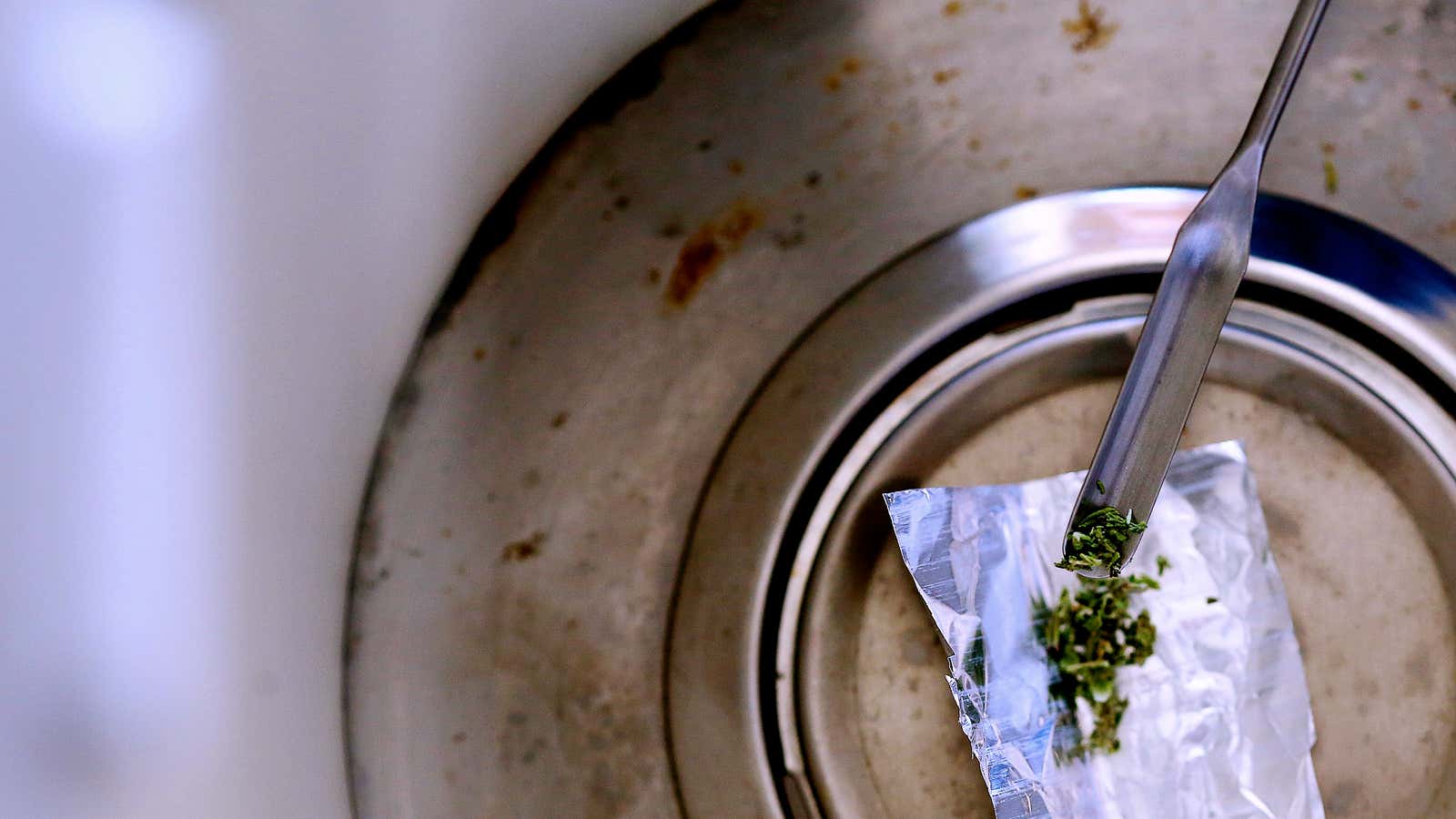There is one source of marijuana for clinical researchers in the US. Ironically, it belongs to the federal government, which classifies cannabis as a Schedule 1 substance with no medical use and high potential for abuse.
The National Institute on Drug Abuse (NIDA) contracts with the University of Mississippi, which runs the only legal cannabis farm in the country—at least from the federal government’s perspective—on 12 acres. There, weed is cultivated for scientific research. But it is very poor quality, according to some scientists, who say this makes demystifying therapeutic cannabis even more difficult.
Sue Sisley, a doctor in Scottsdale, Arizona conducting research on veterans with post-traumatic stress disorder, told PBS that the weed she received through NIDA looked like green talcum powder. Lab testing showed it was both moldy and not potent enough for her research. “It didn’t resemble cannabis. It didn’t smell like cannabis,” she said. “They weren’t able to produce what we were asking for.”
Sisley’s complaint, shared by her colleague Rick Doblin at the Multidisciplinary Association for Psychedelic Studies, is that poor quality marijuana mars clinical studies, skews results, endangers patients, and makes understanding what cannabis can really do therapeutically impossible. Doblin told PBS, “NIDA is completely inadequate as a source of marijuana for drug development and research. They’re in no way capable of assuming the rights and responsibilities for handling a drug that we’re hoping to be approved by the FDA [Food and Drug Administration] as prescription medicine.”
Last year, the FDA considered and rejected petitions to reclassify marijuana out of Schedule 1 in order to speed up medical research. In rejecting reclassification, the agency pointed to ”a lack of accepted safety for its use under medical supervision.”
In other words, because little is known about marijuana in a clinical context, it can’t be reclassified as therapeutic. But because marijuana is a schedule 1 drug that researchers in the US can’t readily access, and because scientists can’t consistently get quality cannabis of the kind considered reliable for a clinical trial, they can’t prove it’s therapeutic.
Despite the official DEA status of weed, the agency does seem to actually think weed is worth studying: A new policy “designed to foster research by expanding the number of DEA-registered marijuana manufacturers” was announced in August 2016. The agency stated that the change “should provide researchers with a more varied and robust supply of marijuana.” Sixteen applications have been submitted but none have been approved yet, and no timeline for approval was announced.
